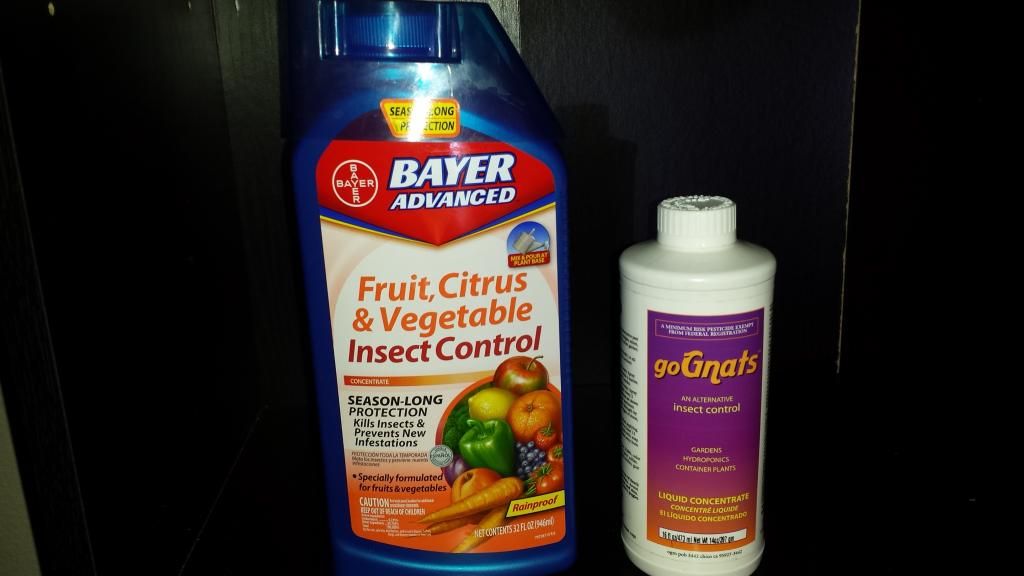
I had mentioned this briefly on my grow log, but figured I'd throw it out here.
At the hydro store, I had asked the clerk about treatment for root aphids in the soil (and there are winged root aphids, along with fungus gnats). Before the clerk could answer, an excited patron chimed in and recommended, "GoGnats".
All in all, it's cedar oil. For some reason these concentrated oils seem to get a bad wrap for their effectiveness against insects. However, it is a fact that cedar oil kills aphids and larvae on contact. The problem in soil is getting it to them.
The patron advised to used 12ml/gallon (even though the label says 20ml/gallon), and said to do a light soak where water just barely comes out of the bottom of the pots.
I did exactly as he described, and I have to say that the fliers were gone for awhile. Digging around in the soil I saw no movement like before.
Deciding that root aphids are notoriously difficult to eradicate, I took the liberty of applying Bayer Fruit and Veg (imidacloprid). This stuff says to treat no more than once per year, and claims to kill aphids, and prevent them from establishing in unaffected systems.
After a couple of more days, I notice a flier come out of the canopy and into the light. I also look and see a winged root aphid on the leaves of one of the plants. I went to touch the aphid and it tried to fly away and couldn't. It's movement was lethargic and less than deliberate; a big contrast to how these things normally behave. I chalked this up to the imidacloprid working.
For good measure, I reapplied the GoGnats at 20ml/gallon. It has been several days and there are no fliers and no movement in the soil.
I like to take my bulb out after a couple of days and inspect for insects. Usually, I'd have anywhere from 10-20 every few days, dead on the bulb. All winged root aphids.
Since the last administration of GoGnats, the bulb has been clean.
This did not come without casualties. I had an enormous Deathstar and a smaller Acapulco Gold that were too far gone to recover. However, four other plants in soil sitting next to these that did have root aphids have been doing fine and seemed to survive the infestation thus far (knock on wood). As I'm closing in on the first week of flower, I'm keeping a close eye on development, and will apply the GoGnats every other week, or once weekly if there is evidence of bugs.
If I were to ever grow in soil again (moving to drip hydro), I would for good measure apply GoGnats and the imidacloprid. I can say that the plants do not mind either treatment at all. As a matter of fact, they may even like it a bit.
I suppose the effectiveness of this treatment has a lot to do with the particular aphids in question, their numbers, and paths of recontamination. For me however, this combo seemed to do the trick, and the aphids were established enough to take down two adult, healthy plants.
I identified the source as rockwool that had root aphid larvae in it.


